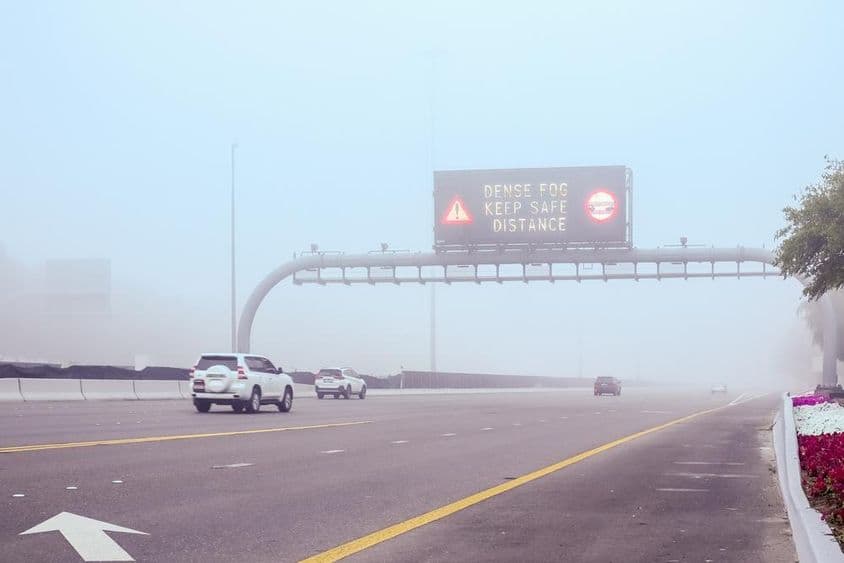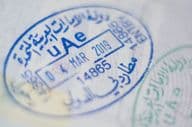Hazard Lights: A Hidden Danger in Fog

Danger in the Fog: Avoid Using Hazard Lights While Driving in the UAE
When the roads of the United Arab Emirates are suddenly shrouded in thick fog, many drivers instinctively switch on their hazard lights, hoping to become more visible to other road users. While this may seem logical at first, it is actually not only dangerous but also illegal—and can incur hefty fines. Dubai and the entire UAE's traffic authorities have been trying for years to curb this practice, as it achieves the opposite effect of what drivers hope for.
Use of Hazard Lights While Driving is Prohibited
UAE traffic laws clearly state that hazard lights are to be used only in emergency situations: for instance, if a car breaks down, an accident occurs, or if a vehicle is forced to stop on the road. Hazard lights are not meant to be used on the move, under poor visibility conditions—such as in fog or rain—to warn others. This type of use is not only against regulations but also dangerous, as it deceives other road participants.
Violators in the UAE can be fined 500 dirhams and incur four black points if they use hazard lights while driving in fog. The rule's objective is clear: to prevent accidents and ensure clear communication among road users.
Why is Using Hazard Lights in Fog Dangerous?
When someone switches on the hazard lights while driving, they lose the ability to signal lane changes or turns. This is especially dangerous in situations where visibility is limited to just a few meters. Other drivers cannot tell if the vehicle ahead is indeed in an emergency or just driving. Fog already reduces spatial awareness and reaction time—adding misleading signals can lead to accidents.
The continuous flashing of hazard lights can also distract other drivers, particularly if multiple cars are attempting to be “more visible” in a foggy stretch. The turn signal—such as the indicator—becomes practically unnoticeable. People around you cannot discern when you intend to change lanes or make a turn, making it difficult for them to react appropriately.
What Should You Do Instead?
Proper lighting use is crucial. Here's how you should proceed:
Turn on the front and rear fog lights—they are specifically designed for poor visibility and effectively increase vehicle visibility without being obtrusive.
Stick with low beams—avoid using high beams as they can reflect back in the fog, blinding others or even yourself.
Use the indicator as usual—this way, other drivers know precisely when you intend to maneuver.
Maintain a safe following distance—reaction times increase in foggy conditions, and stopping distances may be longer.
Drive slower and more predictably—especially if the road surface is wet as well.
Avoid overtaking or sudden lane changes—stay in your lane and follow the road line.
Further Tips for Poor Visibility Conditions
Drivers should not only be cautious because of fog but also generally in reduced visibility or slippery road surfaces. The following tips can help you reach your destination safely:
Do not use your mobile phone—you need all your attention to follow the traffic.
Increase following distance—you need more time to stop in fog and rain.
Watch out for pedestrians, cyclists, and motorcyclists—they are much harder to detect in poor weather.
Use the windshield wipers and heater—even misting can impair visibility.
Listen to the radio or traffic news—so you get timely updates on traffic changes, accidents, foggy areas.
Stick to the right road shoulder—this helps maintain direction and prevent drifting into oncoming traffic.
If you cannot see anything, stop in a safe location—such as a gas station, parking lot, or rest area.
Prevention is Key
The best advice we can give: plan ahead. If fog is forecasted, consider whether you need to travel. If yes, leave earlier so you don't have to rush. Dubai's traffic authorities regularly warn about weather situations, especially during the winter months when fog patches are more common, particularly in the morning.
In recent years, several serious accidents have occurred in the UAE during foggy periods, mainly due to improper lighting, excessive speed, or ignoring following distances. The goal is to prevent such tragedies and ensure everyone gets home safely.
Summary
Using hazard lights while driving in fog is not only a poor decision but also against regulations. The correct procedure involves using fog lights and low beams, accompanied by heightened awareness. Fog is a natural phenomenon we cannot control, but our reaction to it can be. Be the one who drives responsibly and sets an example for others. Traffic is a shared space, and we are collectively responsible for everyone's safety—especially when visibility boundaries blur in the fog.
(Source: Based on Dubai Police statement.)
If you find any errors on this page, please let us know via email.


